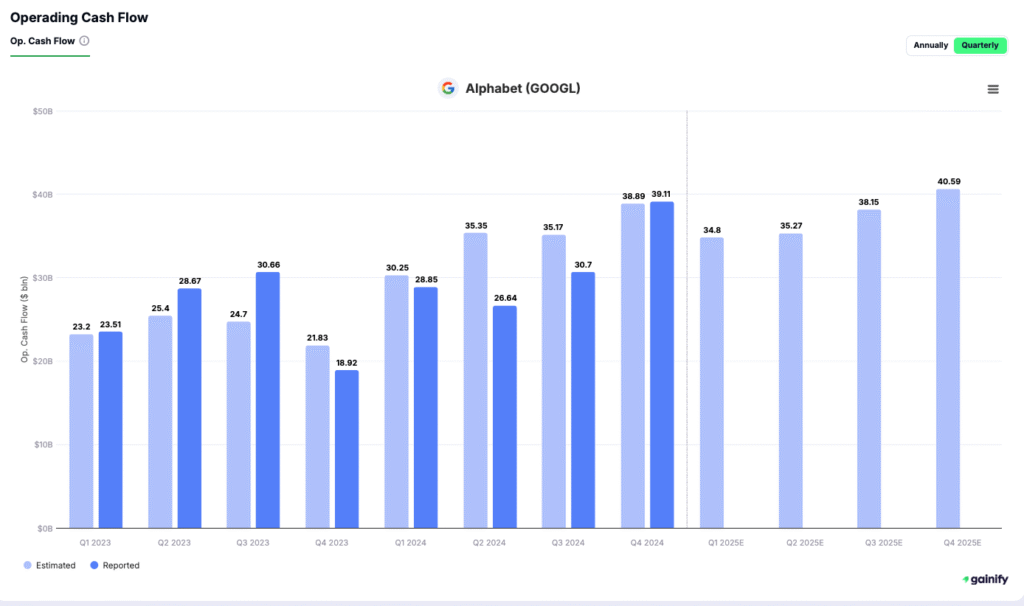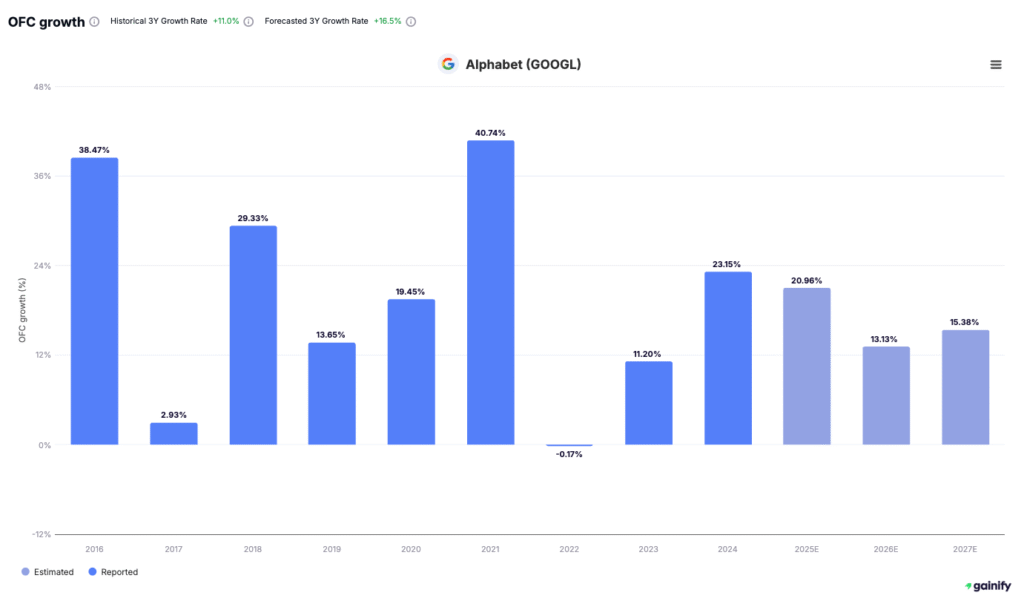Operating Cash Flow (OCF), also known as cash flow from operations, is one of the most important financial metrics used to assess a company’s financial health and operational strength. It reflects the actual cash a business generates through its core operations during a specific accounting period.
This cash flow is vital because it shows whether a company can sustain its activities, invest in growth, repay obligations, and potentially return capital to shareholders – all without depending on external financing activities.
Unlike net income, which is shaped by accounting conventions and non-cash items such as depreciation or amortization, OCF focuses exclusively on real cash movements. This makes it a more accurate and transparent indicator of a company’s ability to generate liquidity from its business model.
For investors, analysts, and financial managers, operating cash flow is a powerful tool. It helps determine whether a company is truly profitable in cash terms, beyond what income statements might suggest. It also provides the foundation for more advanced analysis, such as calculating free cash flow, evaluating dividend coverage, or conducting discounted cash flow (DCF) valuations.
In essence, operating cash flow provides a clear and practical lens through which to view the sustainability of a company’s business operations and its capacity to deliver long-term value.
What Is Operating Cash Flow?
Operating Cash Flow (OCF), also known as cash flow from operations, represents the cash a company generates from its core business activities, such as selling goods or providing services, during a specific period. It is a key indicator of a company’s ability to sustain its operations, reinvest in growth, meet its financial obligations, and return value to shareholders without relying on external financing activities.
Unlike net income, which is shaped by accrual accounting and can be influenced by non-cash items like depreciation, amortization, and revenue recognition policies, OCF focuses exclusively on actual cash transactions. This makes it a more reliable metric when assessing a company’s short-term financial health and its ability to generate liquidity from ongoing operations.
In practical terms, Operating Cash Flow helps answer questions like:
- Can the business generate enough cash to fund day-to-day activities?
- Is it self-sufficient or dependent on borrowing?
- How effectively is it converting sales and profits into real cash?
Because of this clarity, OCF is frequently used by investors, analysts, and financial managers to evaluate operational efficiency and to compare the true earnings power of companies across different industries and accounting frameworks.
Where to Find It:
Operating Cash Flow is typically found in the first section of the statement of cash flow, titled Cash Flows from Operating Activities, which is part of a company’s three core financial statements (alongside the income statement and balance sheet). Publicly traded companies disclose this in their quarterly (10-Q) and annual (10-K) filings with the SEC.

How to Calculate Operating Cash Flow
Operating Cash Flow (OCF) can be calculated using two primary approaches: the indirect method and the direct method. Both methods ultimately arrive at the same figure, but they differ in the way the calculation is presented and the level of detail provided.
Understanding both methods is essential for investors, analysts, and finance professionals, as each offers unique insights into how cash moves through a company’s operations.
1. Indirect Method (Most Common Approach)
The indirect method begins with net income, as reported on the income statement, and adjusts it for non-cash transactions and changes in working capital. This approach is widely used in financial reporting because it reconciles net income to actual cash generated from operations, providing a bridge between accrual accounting and cash accounting.
Operating Cash Flow Formula (Indirect Method)

Where:
- Non-Cash Expenses include depreciation, amortization, stock-based compensation, and deferred taxes.
- Non-Cash Gains may include gains from asset sales or unrealized investment gains, which are deducted because they do not reflect actual cash inflows from operations.
- Changes in Working Capital refer to net changes in current assets and liabilities, such as accounts receivable, inventory, and accounts payable, which are found in the balance sheet.
This refined formula more accurately represents the adjustments necessary to convert accrual-based net income into actual cash from operating activities.
Example: Calculating Operating Cash Flow Using the Indirect Method
Let’s say a company reports the following financial data for the year:
- Net Income: $1,200,000
- Depreciation (non-cash expense): +$250,000
- Gain on Sale of Equipment (non-operating gain): –$50,000
- Increase in Accounts Receivable: –$100,000
- Decrease in Inventory: +$80,000
- Increase in Accounts Payable: +$70,000
🔢 Now, apply the indirect method formula:
OCF = $1,200,000 + $250,000 – $50,000 – $100,000 + $80,000 + $70,000
This method provides an insightful view into how net income translates into actual cash, revealing the underlying liquidity of a business beyond accounting profits. It’s particularly useful in identifying whether earnings are supported by real cash flows.
2. Direct Method (Less Common, More Transparent)
The Direct Method calculates Operating Cash Flow (OCF) by directly identifying and summing actual cash inflows and outflows resulting from a company’s day-to-day operations. Unlike the indirect method, it does not start with net income. Instead, it presents a straightforward breakdown of cash transactions, offering a more intuitive view of how cash moves through the business.
This method includes:
- Cash received from customers
- Cash paid to suppliers
- Cash paid to employees
- Cash paid for rent, utilities, interest, and taxes
Operating Cash Flow Formula (Direct Method)

Example: Calculating Operating Cash Flow Using the Direct Method
Let’s say a company reports the following financial data for the year:
- Cash received from customers: $2,000,000
- Cash paid to suppliers: –$600,000
- Cash paid for salaries and wages: –$400,000
- Cash paid for taxes: –$100,000
🔢 Now, apply the direct method formula:
OCF = $2,000,000 – $600,000 – $400,000 – $100,000 = $900,000
While the direct method provides a highly transparent view of operational cash inflows and outflows, it is less commonly used in external financial reporting. This is largely due to the data-intensive nature of the method, as it requires companies to track and categorize each individual cash transaction – something not typically emphasized in traditional accrual-based accounting systems.
Operating Cash Flow vs. Net Income
Understanding the distinction between Operating Cash Flow (OCF) and Net Income is essential for accurate financial analysis. While both are key financial metrics, they serve different purposes and rely on different components.
Net Income is derived from a company’s income statement and includes both cash and non-cash items, such as depreciation, amortization, and changes in deferred taxes. It also reflects the effects of accounting choices and accruals.
Operating Cash Flow, on the other hand, adjusts net income by removing non-cash expenses and accounting for changes in working capital. This adjustment provides a more accurate view of the cash a business generates from its core operations.
Metric | Includes Non-Cash Items | Reflects Working Capital | Primary Use |
Net Income | ✅ Yes | ❌ No | Profitability Measurement |
Operating Cash Flow | ❌ No | ✅ Yes | Liquidity & Cash Health |
Key Insight: OCF is often considered more reliable than net income for assessing a company’s ability to generate cash, as it is less influenced by accounting policies.
What Is Operating Cash Flow Yield?
Operating Cash Flow Yield is a financial ratio that measures a company’s ability to generate cash relative to its market valuation. It is particularly useful for comparing companies across different industries or market caps.
Formula for Operating Cash Flow Yield:

Purpose and Use Cases:
- Assess whether a stock is overvalued or undervalued
- Evaluate operational efficiency relative to investor expectations
- Benchmark companies in the same sector
Example: If a company generates $500 million in OCF and has a market capitalization of $5 billion:
OCF Yield = $500M / $5B = 10%
A higher OCF yield suggests strong cash-generating ability and potential undervaluation, whereas a lower yield could indicate weak fundamentals or overvaluation.
Benefits of Analyzing Operating Cash Flow
✔ Reflects Actual Cash Performance: OCF represents the real cash flowing in and out from business operations, offering a clear picture of financial viability.
✔ Reduces Accounting Noise: Unlike net income, OCF isn’t distorted by non-cash expenses or accrual-based accounting.
✔ Indicator of Sustainability: Consistent positive OCF signals a well-managed business with sufficient cash to cover liabilities and fund growth.
✔ Essential in Valuation Models: OCF is a core component of DCF (Discounted Cash Flow) models used by analysts and investors to estimate intrinsic value.
✔ Supports Dividend Assessment: Helps determine whether a company can sustain or grow dividend payouts over time.

Limitations and Considerations
⚠ Short-Term Volatility: Working capital (current assets or current liabilities) swings (e.g., inventory buildup or receivable delays) can temporarily distort OCF.
⚠ Does Not Include CapEx: OCF does not account for capital expenditures, which are vital for evaluating long-term sustainability and free cash flow.
⚠ Requires Context: OCF should be evaluated alongside metrics like Free Cash Flow, EBITDA, and ROIC for a complete financial picture.
⚠ Industry-Specific Benchmarks: OCF benchmarks vary widely. Asset-light industries may report higher ratios compared to capital-intensive sectors like manufacturing or energy.
Final Thoughts
Operating Cash Flow is a cornerstone of financial analysis and strategic decision-making. It offers a clear view of a company’s ability to convert core operations into real cash, providing a more reliable benchmark than net income.
Investors, CFOs, and financial analysts rely on OCF to:
- Evaluate business sustainability
- Screen for fundamentally strong investments
- Assess capital efficiency and profitability
When used in conjunction with complementary ratios like Free Cash Flow Yield, ROIC, and EBITDA margins, OCF becomes a powerful tool for identifying companies with robust financial health and long-term value potential.




